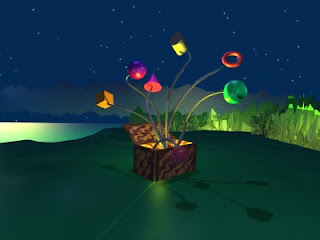 Old but good, this painting must have been done somewhere between 1991 and 1992, from a photograph of an outhouse in the woods of Bolton. The area is somewhere near the town line, close to an old camp ground, the outhouse is part of the camp infrastructure. My Dad and I used to ski up there, the trail you see in the painting is part of the ski trail we carved out.
Old but good, this painting must have been done somewhere between 1991 and 1992, from a photograph of an outhouse in the woods of Bolton. The area is somewhere near the town line, close to an old camp ground, the outhouse is part of the camp infrastructure. My Dad and I used to ski up there, the trail you see in the painting is part of the ski trail we carved out.It is interesting sometimes to look back on the older work. There are some key differences in style, the brushstrokes are a little more tentative and there are clearly areas where I have gone over the old brush strokes a few times...typically that will lead to bit of a muddy 'overworked' appearance. But overall this work has a fresh clean feel to it. Most of the paint is applies in a very transparent way (not as heavy and thick as I do more recently), and I have made a lot of 'glazing' effects, where thin layers of paint are applied over top of each other for a shimmering effect, the best example being the trail itself, which was created by putting darker layers beside it. I had also added the two trees from imagination, they were not in the photo as I remember, this was done to break the monotony of the horizontal tree line and keep the viewers eye from following the ski trail off the picture.
cold press (watercolour block) 11x14" , 1991 or 1992
















































